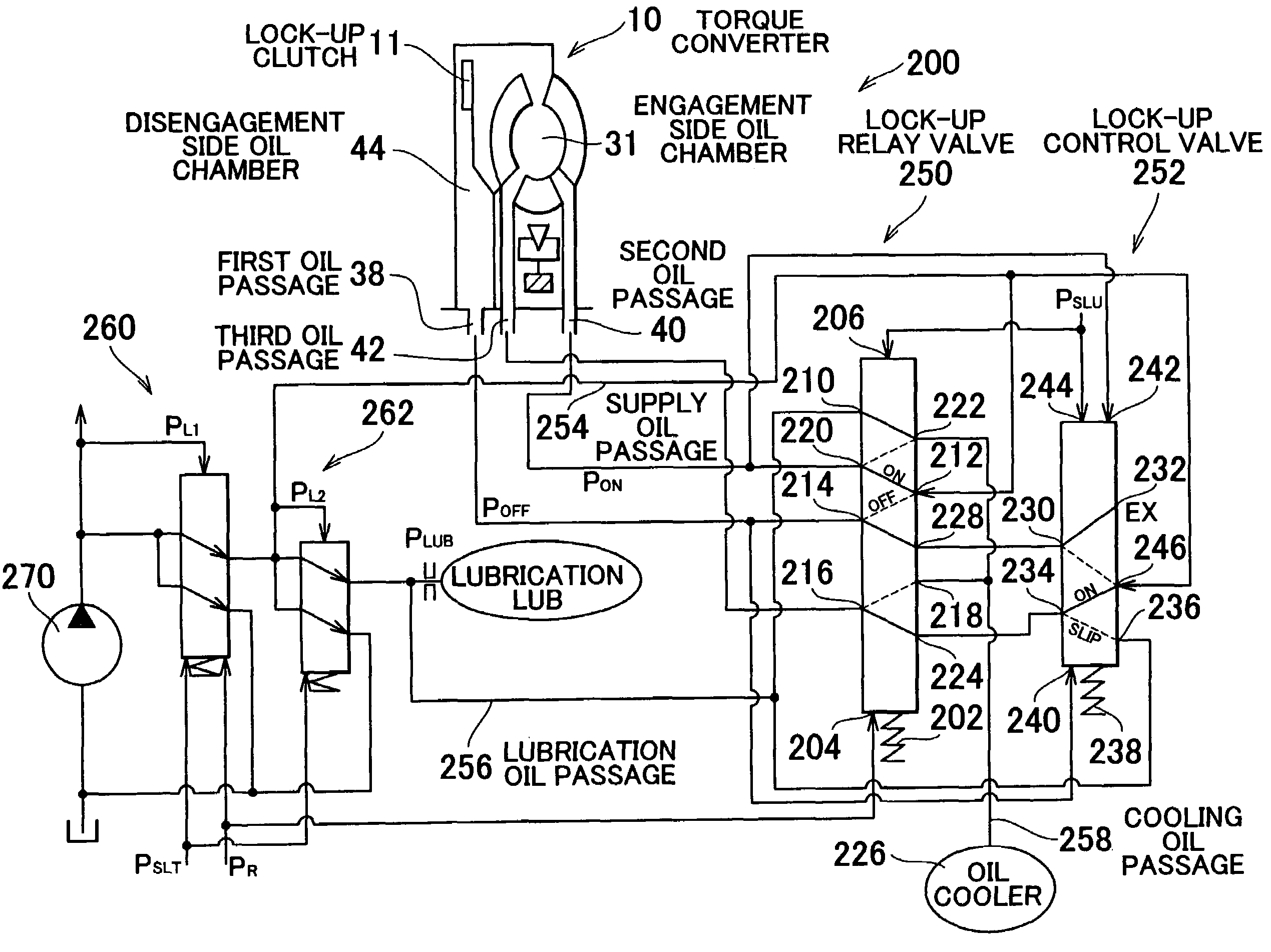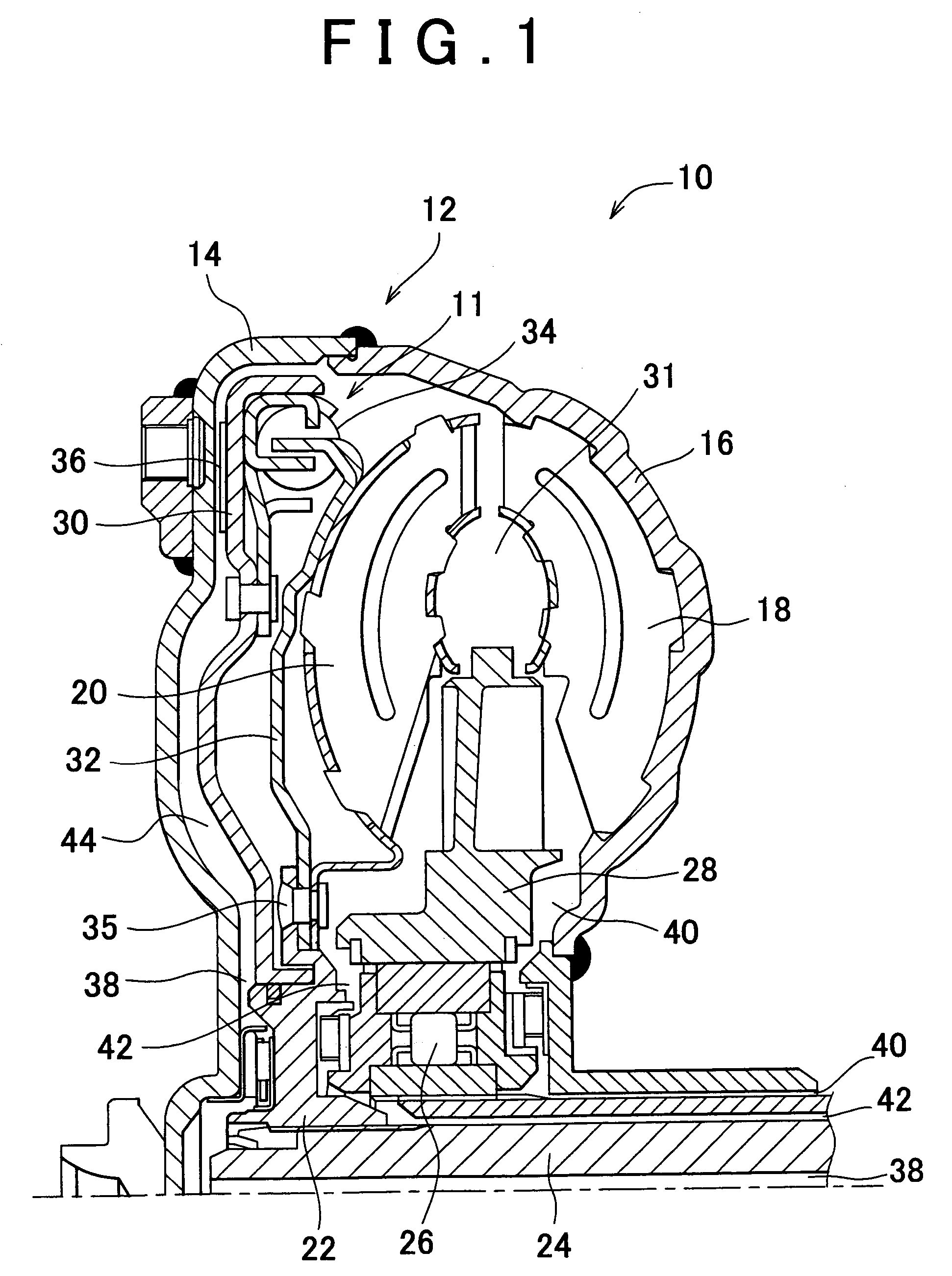Hydraulic pressure control apparatus for vehicular hydraulic power transmission device with lock-up clutch
a hydraulic power transmission device and hydraulic pressure control technology, which is applied in the direction of rotary clutches, fluid couplings, gearings, etc., can solve the problems of inability to control the flow rate of hydraulic oil when the orifice is opened, increase the frictional heat generated by slippage, and reduce the hydraulic pressure in the engagement side oil chamber. , to achieve the effect of sufficient transmission torque capacity of the lock-up clutch, and increase the hydraulic pressure in the engagement side oil chamber
- Summary
- Abstract
- Description
- Claims
- Application Information
AI Technical Summary
Benefits of technology
Problems solved by technology
Method used
Image
Examples
Embodiment Construction
[0024]Hereinafter, an embodiment of the invention will be described with reference to drawings.
[0025]FIG. 1 is a diagram showing a torque converter 10 including a lock-up clutch 11 which is a hydraulic transmission device according to an embodiment of the invention. The torque converter 10 includes a cover 12 which is an input side rotational member, and which is rotated integrally with a crank shaft of an engine (not shown). The cover 12 includes a front cover 14 that is a cover on the engine side (on the left side in FIG. 1), and a pump shell 16 that is a cover on a transmission side (on the right side in FIG. 1). The front cover 14 and the pump shell 16 are integrally coupled by welding. The front cover 14 and the pump shell 16 are configured so as to be oil-tight. The front cover 14 has a cylinder shape having a bottom, and is opened in one way. The outer peripheral portion of the pump shell 16 is coupled to the outer peripheral portion of the opening portion of the front cover ...
PUM
 Login to View More
Login to View More Abstract
Description
Claims
Application Information
 Login to View More
Login to View More - R&D
- Intellectual Property
- Life Sciences
- Materials
- Tech Scout
- Unparalleled Data Quality
- Higher Quality Content
- 60% Fewer Hallucinations
Browse by: Latest US Patents, China's latest patents, Technical Efficacy Thesaurus, Application Domain, Technology Topic, Popular Technical Reports.
© 2025 PatSnap. All rights reserved.Legal|Privacy policy|Modern Slavery Act Transparency Statement|Sitemap|About US| Contact US: help@patsnap.com



